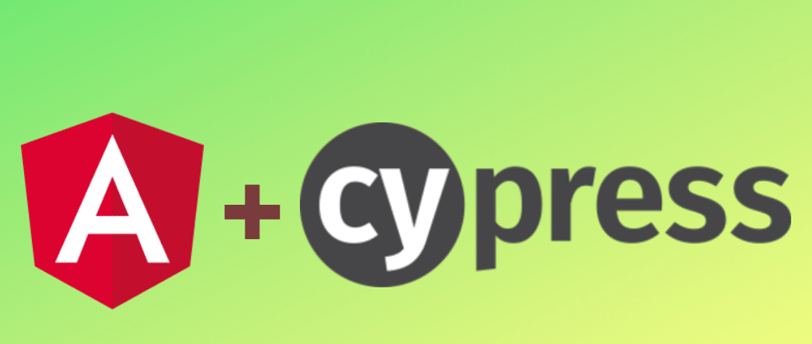Angular 18 and Cypress Code Coverage Setup Guide
This post describes how to setup Cypress code coverage in Angular 18
Pawan ghising
3/11/20252 min read


This document outlines the code coverage setup for an Angular 18 application using Cypress for E2E testing. This approach uses a manual coverage data collection method with newer Angular versions.
Prerequisites
Angular 18 project
Cypress has already installed and configured
Installation
Install the necessary packages:
npm install -D @cypress/code-coverage nyc @istanbuljs/nyc-config-typescript rimraf
Configuration Files
1. Create a .nycrc file in the project root
{
"extends": "@istanbuljs/nyc-config-typescript",
"all": true,
"include": ["src/**/*.ts"],
"exclude": [
"src/test.ts",
"src/**/*.spec.ts",
"src/app/**/*.module.ts",
"src/main.ts",
"src/environments/**"
]
}2. Update your Cypress support file (cypress/support/e2e.ts)
Add the following to the end of your existing support file:
// Import code coverage plugin
import '@cypress/code-coverage/support';// Define type for window.__coverage__
declare global {
namespace Cypress {
interface Window {
coverage?: Record<string, unknown>;
}
}
}// Define saveCoverage command
Cypress.Commands.add('saveCoverage', () => {
cy.window().then((win) => {
const coverage = win.__coverage__;
if (coverage) {
cy.task('ensureDirectoryExists', '.nyc_output')
.then(() => {
cy.writeFile('.nyc_output/out.json', JSON.stringify(coverage));
});
}
});
});// Global afterEach hook to save coverage after each test
afterEach(() => {
cy.saveCoverage();
});3. Update your Cypress configuration file (cypress.config.ts)
import { defineConfig } from 'cypress';
import registerCodeCoverageTasks from '@cypress/code-coverage/task';
import * as fs from 'fs';export default defineConfig({
e2e: {
setupNodeEvents(on, config) {
// Register code coverage tasks
registerCodeCoverageTasks(on, config);
// Add task to ensure directory exists
on('task', {
ensureDirectoryExists(dirPath) {
if (!fs.existsSync(dirPath)) {
fs.mkdirSync(dirPath, { recursive: true });
}
return null;
}
});
return config;
},
// Your other Cypress configuration...
},
});4. Add scripts to your package.json
"scripts": {
"cypress:open": "cypress open",
"cypress:run": "cypress run",
"coverage:clean": "rimraf .nyc_output coverage",
"coverage:report": "nyc report --reporter=lcov --reporter=text-summary",
"coverage:html": "nyc report --reporter=html",
"test:coverage": "npm run coverage:clean && cypress run && npm run coverage:report",
"test:coverage:open": "npm run coverage:clean && cypress open"
}Usage
Normal Development
For regular development, you can continue to use:
ng serve
This starts your Angular application without any coverage instrumentation.
Running Tests with Coverage
To run tests and generate coverage reports:
npm run test:coverage
This command:
Cleans previous coverage data
Runs Cypress tests headlessly
Generates coverage reports
Interactive Testing with Coverage
To open the Cypress UI for interactive testing with coverage:
npm run test:coverage:open
After running your tests through the UI, generate reports with:
npm run coverage:report
Viewing Coverage Reports
After generating reports:
Text Summary: Displayed in the console after running coverage:report
HTML Report:
npm run coverage:html
Then open coverage/index.html in your browser
Cleaning Coverage Data
To clean all coverage data:
npm run coverage:clean
How It Works
The Cypress code coverage plugin instruments your Angular code during test runs
Our custom saveCoverage command saves the coverage data to .nyc_output/out.json after each test
NYC (Istanbul) processes this data to generate human-readable reports
Troubleshooting
No Coverage Data
If .nyc_output directory is empty or not created:
Verify the global afterEach hook is properly set up in your support file
Check the Cypress task registration in cypress.config.ts
Manually create the directory: mkdir .nyc_output
Low Coverage Percentages
If you're seeing unexpectedly low coverage:
Check the .nycrc file includes and excludes
Ensure your tests are interacting with the components you want to measure
Look at the detailed HTML report to identify untested areas
Notes
This approach was designed specifically for Angular 18, where traditional instrumentation methods may not work due to changes in the Angular build system. It uses a manual approach to save coverage data rather than modifying the Angular build process.
CONTACTS
+1 469-662-0172
info@miratechnologies.net
ADDRESS
5511 Parkcrest Dr. Suite 103 , Austin, TX, United States, 78731
